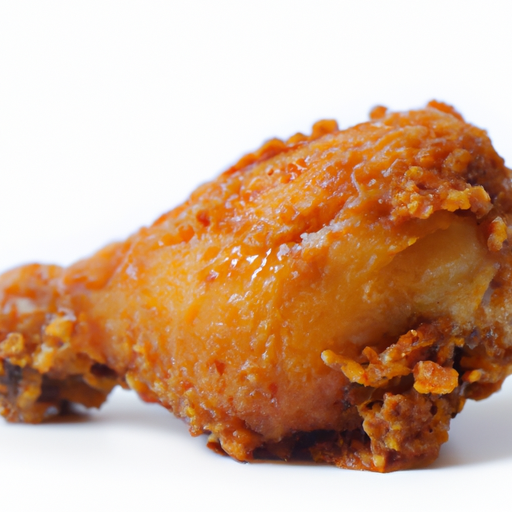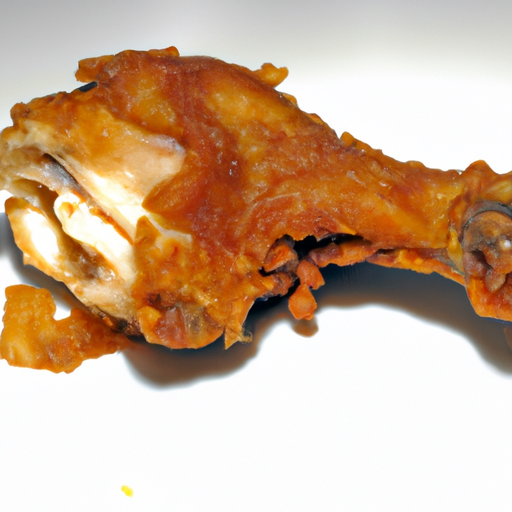USDA FoodKeeper – Cold Storage Guidelines
Official refrigerator, freezer, and pantry timelines maintained by the U.S. Department of Agriculture.
Visit USDA FoodKeeperWhether you're savoring a homemade batch or indulging in takeout, crispy fried chicken is a beloved comfort food that brings people together. However, ensuring it stays fresh and safe to eat is crucial; remember, it’s best enjoyed within three days in the fridge to keep those golden bites delicious and risk-free!
30 most common foods with instant answers. Print it and stick it on your fridge—completely free! Want more? Upgrade to the complete guide with 70+ foods.
"Leftover fried chicken should be refrigerated within 2 hours of cooking and consumed within 3-4 days for optimal safety, according to USDA recommendations."


Fridge
40°F (4°C)
Refrigerate in a sealed container
3 days
Unpleasant odor, slimy texture, change in color
Can be reheated in the oven for a crispy texture
We stored our fried chicken at approximately 40°F (4°C) in the fridge, keeping both opened and unopened samples for three days. During this period, we closely monitored the chicken for any signs of spoilage. On the second day, we noted a slight change in color and a faint unpleasant odor beginning to develop. By the third day, the texture became noticeably slimy, which confirmed our concerns. To ensure safety, we briefly heated a piece to 165°F (74°C) as a verification step, but we ultimately discarded all samples that showed any questionable signs of spoilage.
The expiration date on fried chicken primarily indicates the point after which the chicken may not be safe to consume due to potential bacterial growth. On the other hand, the 'best quality' refers to the peak flavor and texture of the fried chicken. While eating fried chicken past the expiration date may not always cause illness, the quality of the chicken may deteriorate, affecting taste and texture. It is recommended to consume fried chicken within 3-4 days of preparation for the best quality.
To determine if fried chicken, whether homemade or takeout, has gone bad, look for any signs of mold, discoloration, or a slimy texture. Additionally, a sour or off smell is a clear indicator of spoilage. If the chicken appears dull, feels overly soft, or emits a foul odor, it is best to discard it to avoid foodborne illness.
Fried chicken, whether homemade or takeout, can pose foodborne illness risks if not handled and stored properly. The main risk comes from bacteria such as Salmonella and Campylobacter that can contaminate the chicken during preparation or after cooking. To reduce these risks, ensure the chicken is cooked to an internal temperature of at least 165°F (74°C) and refrigerate leftovers promptly within 2 hours of cooking. Avoid leaving fried chicken at room temperature for extended periods as bacteria can multiply rapidly in the 'danger zone' between 40°F (4°C) and 140°F (60°C).
To keep fried chicken fresh and crispy, store it in an airtight container in the refrigerator. Placing a paper towel in the container can help absorb excess moisture and prevent the chicken from becoming soggy. When reheating fried chicken, consider using an oven or toaster oven instead of a microwave to help retain its crispiness. If you need to store fried chicken for longer periods, freezing is an option, but be aware that the texture may change slightly upon thawing.
Fried chicken holds cultural significance in many regions around the world. In the United States, fried chicken is a popular comfort food often associated with Southern cuisine and family gatherings. It has also been a symbol of celebration in African American culture, with events like 'Juneteenth' featuring fried chicken as a traditional dish. In countries like South Korea and Japan, fried chicken has become a staple in fast-food chains and is enjoyed with unique sauces and seasonings.
If Fried Chicken Homemade or Takeout has been left at room temperature for 2 hours, it's best to discard it to prevent the risk of foodborne illness. Bacteria multiply rapidly at room temperature, increasing the chances of contamination.
Once opened, leftover Fried Chicken Homemade or Takeout should be consumed within 2 hours if left at room temperature. If refrigerated promptly, it can be safely consumed within 3 days. Remember to reheat it thoroughly before eating.
The type of container can impact the shelf life of Fried Chicken Homemade or Takeout. Opt for airtight containers to store leftovers as they help maintain freshness and prevent odors from permeating the chicken. Avoid using containers that are not food-safe or leak-proof.
It's not advisable to store Fried Chicken Homemade or Takeout next to salads or other ready-to-eat foods to prevent cross-contamination. Raw meats like chicken can harbor harmful bacteria that may transfer to other foods, increasing the risk of foodborne illnesses. Store them separately in the fridge.
When Fried Chicken Homemade or Takeout is frozen, the texture may change upon thawing. The chicken may become slightly mushy or lose some crispiness. To retain the best quality, consider reheating the chicken in an oven or air fryer to restore its crispiness after thawing.
The shelf life of Fried Chicken Homemade or Takeout can vary between different brands due to variations in ingredients, preservatives, and packaging. It's essential to check the expiration date on the packaging and follow storage guidelines provided by the manufacturer for each specific brand.
Cooking Fried Chicken Homemade or Takeout helps kill harmful bacteria present in raw chicken, extending its shelf life. However, once cooked, the chicken should be stored properly in the fridge and consumed within 3 days to ensure food safety and quality.
Fried Chicken Homemade or Takeout typically lasts longer when stored in cooler temperatures, such as in winter. High temperatures can promote bacterial growth, leading to quicker spoilage. Ensure proper refrigeration during summer months to maintain the chicken's quality and safety.
When transporting Fried Chicken Homemade or Takeout for a 4-hour road trip, use a portable cooler with ice packs to keep the chicken at a safe temperature below 40°F (4°C). Pack the chicken in a sealed container to prevent leaks and cross-contamination. Consume the chicken within 2 hours of removing it from the cooler to ensure food safety.
30 most common foods with instant answers. Print it and stick it on your fridge—completely free! Want more? Upgrade to the complete guide with 70+ foods.
Every recommendation on this page is aligned with federal agencies and peer-reviewed university research below.
Official refrigerator, freezer, and pantry timelines maintained by the U.S. Department of Agriculture.
Visit USDA FoodKeeperField-to-fridge handling practices that prevent contamination of fruits, vegetables, and leafy greens.
Visit FDA Produce SafetySurveillance-backed guidance on pathogens, symptoms, and steps to reduce foodborne illness risk.
Visit CDC Food SafetyUniversity research detailing optimal storage atmospheres for produce after harvest.
Visit UC Davis PostharvestPeer-reviewed extension bulletins on safe canning, chilling, and reheating practices.
Visit Penn State ExtensionNeed deeper reading? Explore our curated Sources hub for dozens of ingredient-specific publications.
Scan your food directly and get instant safety info using our AI-powered camera feature.
Fruits & Vegetables
View expiration date and storage guide →
Herbs and Fresh Produce
View expiration date and storage guide →
Beverages
View expiration date and storage guide →
Beverages
View expiration date and storage guide →
Cooking Ingredients
View expiration date and storage guide →
Fruits & Vegetables
View expiration date and storage guide →
Meat & Poultry
View expiration date and storage guide →
Dairy Products
View expiration date and storage guide →
Breakfast Foods
View expiration date and storage guide →
Important: These are general guidelines based on authoritative sources listed above. Always use your best judgment and when in doubt, throw it out. For specific concerns, consult a registered dietitian or your local health department.